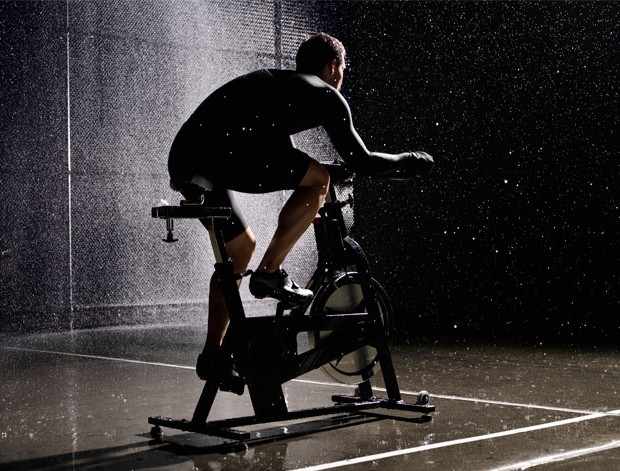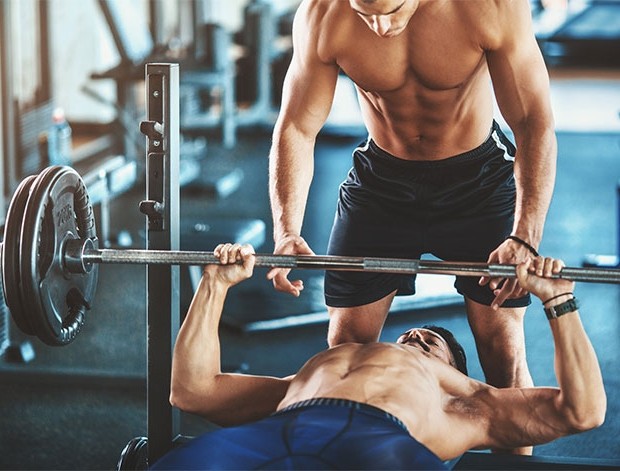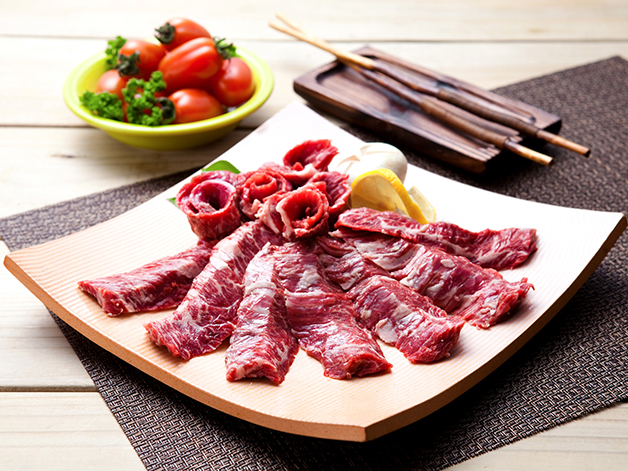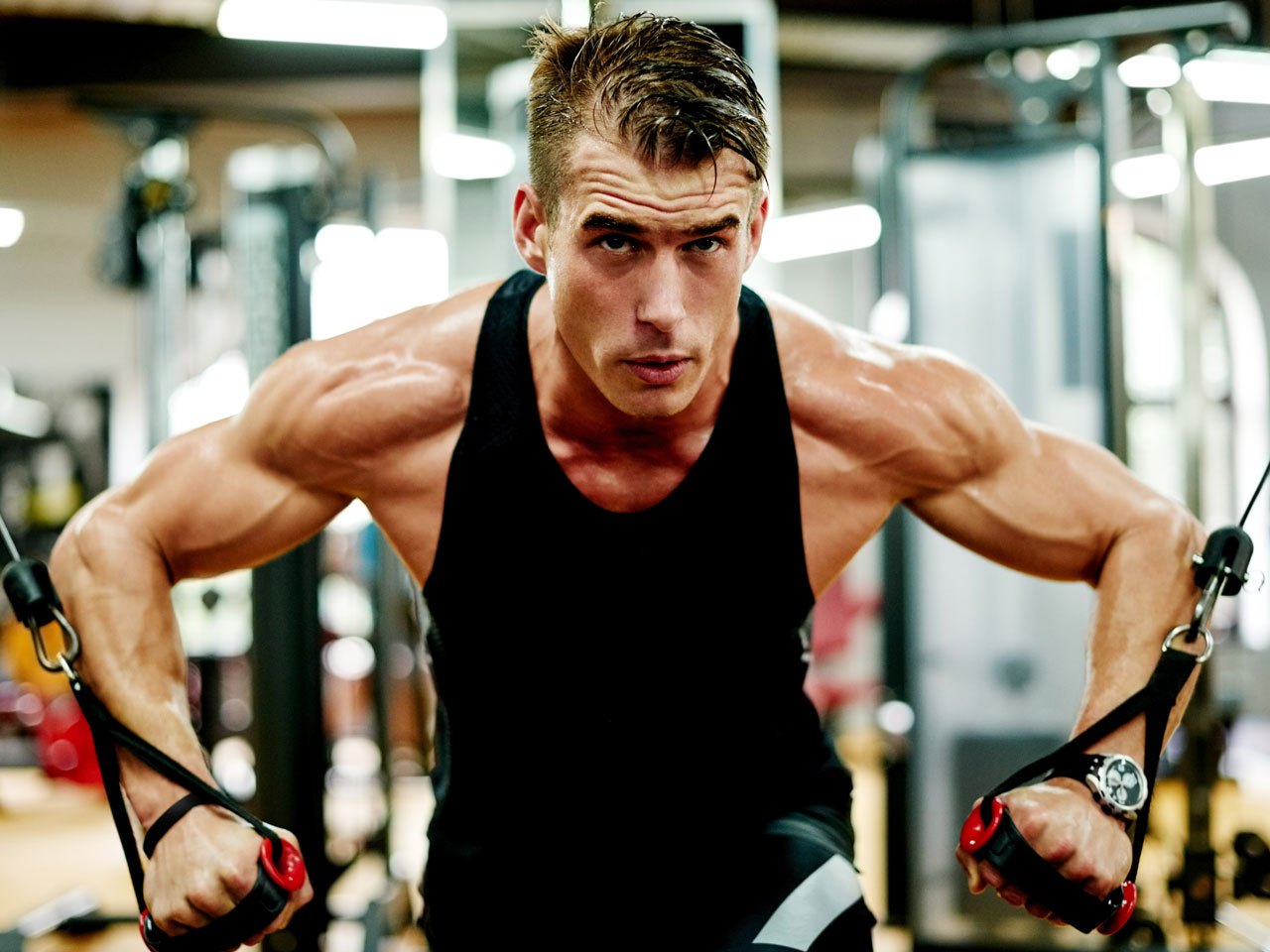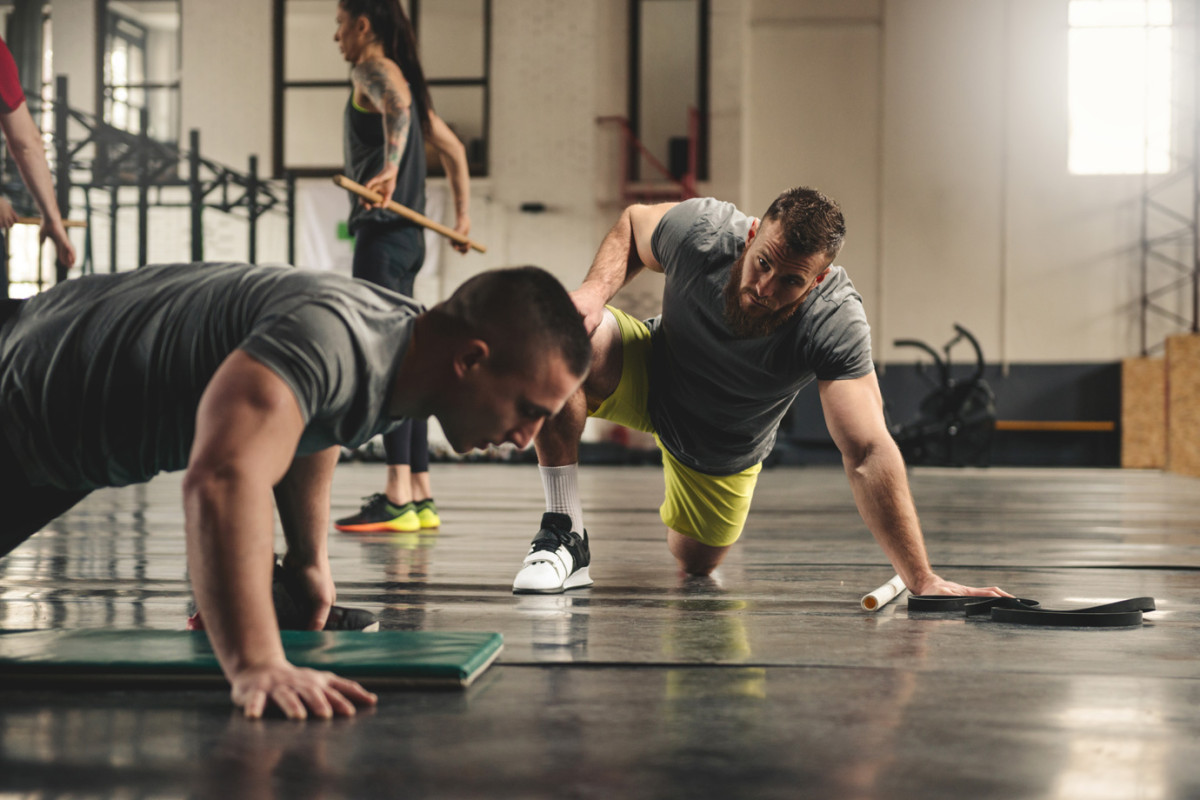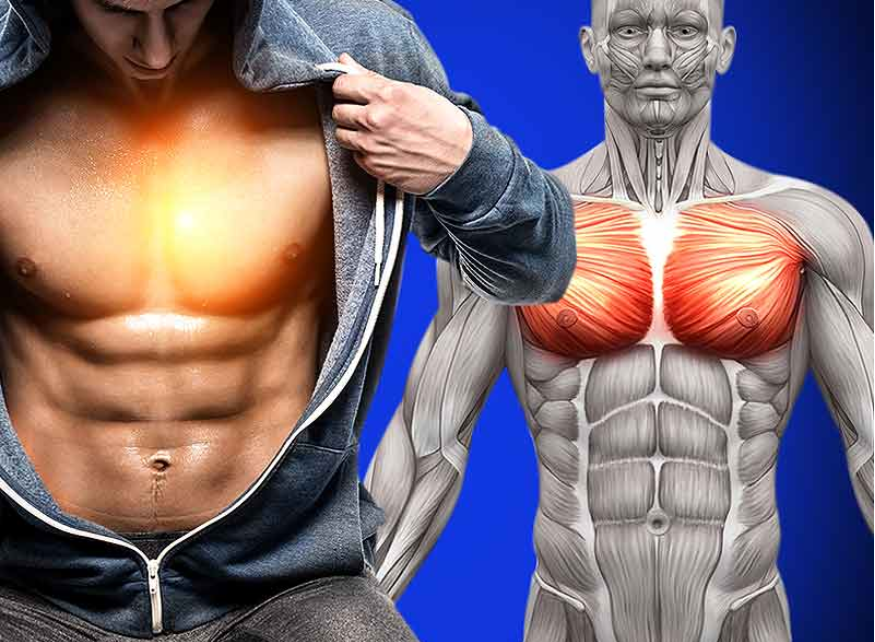If you’re just starting on your weightlifting path, good on you. We believe that every man can benefit from lifting, as resistance training does so much more than make you strong: it keeps your bones and internal organs healthy and even increases testosterone.
There’s no need to be scared of the herd of turbo-bros gathered by the watering hole: we’ve consulted top PT Jason Patmore on how to get started pumping iron. He walks us through everything you need to know regarding barbells, dumbells and machines.
Barbell
The barbell is going to be your best friend in your weightlifting journey. Start getting cosy. “To start off, we’ll do simple movements without any weight“ says Patmore. Never mind what anyone else thinks: remove the weight from thebar. As a beginner, it’s better to perfect the motions you’ll be doing over and over again than to carry on with too much weight. Here’s three exercises Patmore recommends for newbies:

1. The barbell lunge.
- Place the bar across your back.
- Step forward with your right foot and sink into a lunge, so both legs are bent with your back knee as close to the floor as possible.
- Drive yourself back up and repeat on the other side.

2. The bench press
- Lie back on a flat bench holding a barbell in the rack above you with a shoulder-width, overhand grip.
- Lift the bar off the rack and position it above your chest with arms fully extended. From the starting position, breathe in and lower the bar slowly until it skims the middle of your chest.
- Push the bar back to the starting position explosively as you breathe out. That’s one rep.

3. Barbell Push Press
- Grab a barbell and hold it at shoulder height with palms facing forwards. Set your feet shoulder width apart and slightly bend your knees to initiate the move.
- Push up with your legs to explosively press the barbell straight above your head. Return under control to the start position.
Top Tip!
“Squeeze the bar as hard as you can,” says Patmore. “You want to try and snap the bar in two!” Sounds a bit drastic, but hulking out has its advantages. This sort of tension is designed to activate your muscles, so keep taut at the top of a lift rather than letting your joints take the weight. If you’re doing the bench press, imagine trapping a pencil between your pectorals and squeezing it: it’ll ensure you get the most out of every rep. Learning to do this now will prevent bad habits popping up in the future. Just don’t start turning green.
Dumbbells
Barbells are fine for bigger lifts that hit lots of major muscle groups, but dumbbells allow you to target individual muscles. You don’t need much space to use them and they’re extremely versatile to boot. Patmore recommends three isolation exercises to target you arms and shoulders, vital in building the strength for bigger lifts. Load your guns.

1. Single-arm dumbbell row
- Hold a dumbbell in one hand in front of your body with an overhand grip.
- Raise your elbow up and to the side using your shoulder muscles to raise the weight up towards your chin. Lower under control back to the start position.

2.Bicep curl
- Hold two dumbbells by your thigh, palms facing outwards.
- Use your biceps to lift the weights until they are at shoulder height, then lower back down and repeat.

3. Dumbbell kickbacks
- Hold a dumbbell with your right hand and place your left knee and left hand on a bench.
- Start with your arm bent, bringing the weight next to your chest so your upper arm is parallel to the floor, and straighten your arm behind you using your forearm. Return slowly to the start position and repeat.
Top tip!
“Too many bicep curls are 'completed' without actually extending your arm at the end of a rep,” Patmore tells us. Your first task as a beginner is to master correct form, so full extension is essential to put strain on the muscle. Contracting your bicep at the ‘top’ of the curl also puts more stress on it. “Say ‘pause’ in your head while squeezing the bicep before lowering the weight,” says Patmore. The same goes for the tricep kickbacks. Doing this right will cut down your transition time from skinny to swole.
Machines
Machines get scorned by a lot of weightlifters as they trap you in a single range of motion, but don’t believe the bad press. They help you learn to perform key movements with no risk. For beginners, Patmore recommends the Smith machine, a barbell fixed on a set of rails owned by most gyms. Try these three exercises.

1. Seated shoulder press
- Sit on the bench holding a barbell in front of your shoulders with an overhand grip.
- Press the weight up above your head until your arms are fully extended. Return slowly to the start position.

2. Incline Bench Press
- Lie back on a bench set to an incline angle and lift a barbell to shoulder height, palms facing away from you.
- Breathe out as you press up with both arms. Lock out your arms and squeeze your chest before returning slowly to the start position.

3. Squat
- Stand with your feet more than shoulder-width apart and hold a barbell across your upper back with an overhand grip – avoid resting it on your neck.
- Hug the bar into your traps to engage your upper back muscles. Slowly sit back into a squat with head up, back straight and backside out.
- Lower until your hips are aligned with your knees, with your legs at 90 degrees.
- Drive your heels into the floor to push yourself explosively back up. Keep form until you’re stood up straight: that’s one.
Top tip!
“Machines teach you the correct mechanics of moving your body as one,” says Patmore. Practicing compound lifts on Smith machines is like riding a bike with stabilisers: it teaches you how to move so you can eventually do it yourself. Patmore recommends doing these at the end of a session. “The little stabiliser muscles that are activated with freeweights will be tired. This takes those out of the equation.”
You can let go now: congratulations. You survived your first session!

















































